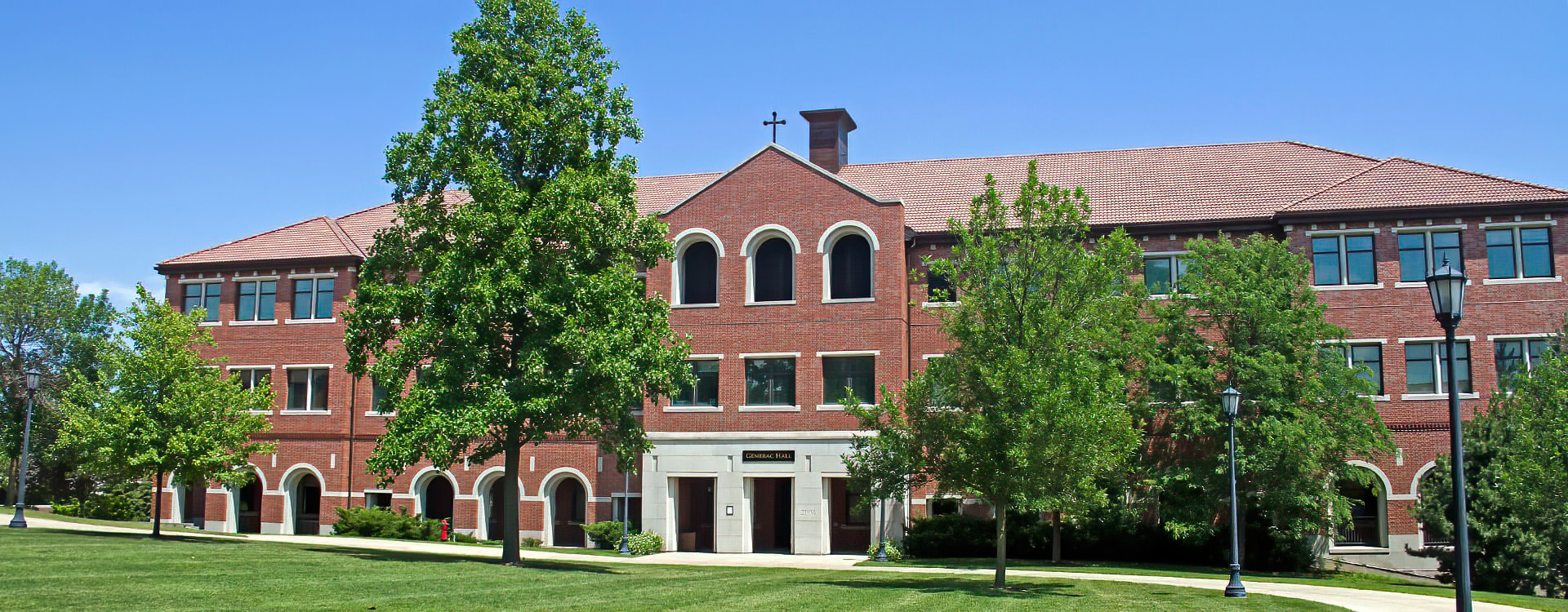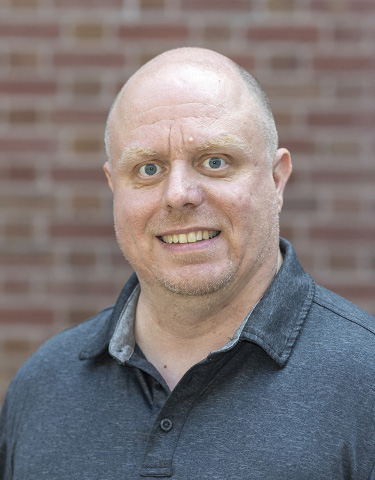Education
- B.A., Luther College - Biology and Chemistry
- Ph.D., Arizona State University - Molecular and Cellular Biology
- Postdoctoral Research - Princeton University
Background
While it may be detrimental to my future at WLC to admit, I grew up in Minnesota rooting for all of the Minnesota sports teams including the Vikings. Despite moving all around the country for my education and living in Wisconsin for over nine years, my loyalties have not changed. Given this steadfastness in support of these teams, I believe my allegiances for these teams is genetic and despite my thorough training in genetics and molecular biology, I have not found the specific gene that causes this or a way to change it. Therefore, I will accept your sympathy for this affliction and any talented players for my teams.
Teaching
- BIO 202 - Principles of Biology 2
- BIO 341 - Microbiology
- BIO 354 - Immunology
- BIO 360 - Genetics
- BIO 433 - Molecular Biology
- BIO 401 - Research Strategies I
- BIO 402 - Research Strategies II
- BIO 403 - Research Strategies III
- CHE 351 - Biochemistry II
Research Interests
Bacteria and viruses are everywhere and perform a variety of tasks that can be both beneficial and harmful to humans. They are necessary for making certain food products, aiding in human digestion, and they can be exploited for industrial purposes. Most commonly, however, bacteria and viruses are known for their ability to cause harmful infections in the human body. With the discovery and utilization of antibiotics and vaccines, many thought bacterial and viral infections would eventually become a thing of the past. Unfortunately, bacteria are becoming resistant to these antibiotics and new or mutated viruses can pop up with little warning. To compound that fact, new antibiotics are becoming increasingly difficult to find and develop and vaccine development takes time. Therefore, it is growing increasingly important to understand the bacterial mechanisms of antibiotic resistance and to find alternate methods of controlling these organisms.
My current research focuses on a variety of ways to inhibit bacteria and viruses. The TolC-AcrAB antibiotic efflux pump is a mechanism used by many bacteria to remove antibiotics from their cells that would normal kill them. By understanding how this mechanism works, scientists can devise ways to inhibit it, thereby making bacteria more susceptible to current antibiotics. I have also studied viruses that specifically target bacteria called bacteriophages. It is possible that that these viruses may be used for antibacterial purposes in the future. Additionally, my students and I have been involved in the invention of an ozone sterilization device that is capable of inactivating viruses and bacteria in a quick, self-contained, easy-to-use device.
Students in my lab have investigated some non-traditional ways to inhibit bacteria. Silver nanoparticles are microscopic pieces of silver that have antibiotic properties. Research has taken place to understand how that occurs. We have also examined the antibacterial effects of specific essential oils. Several essential oils are capable of inhibiting bacterial growth so characterizing these abilities better could be useful in the future.
While these are my current areas of research, I have several other research interests as well. I am always happy to have students work with me on these projects so feel free to contact me for more information.
Scholarly Works
Select Presentations
October 2020 - “Biology and Computer Programming: a tale of scale” White Box Lunch series at Wisconsin Lutheran College, Milwaukee, WI. (Invited speaker)
November 2019 - “Lead Scentsor – A system for E. coli detection of lead in water” Presented by the WLC iGEM team. 2019 iGEM Jamboree, Boston, MA. (Bronze medal)
October 2018 - “Ec-Sense – A system for E. coli detection in contaminated water” Presented by the WLC iGEM team. 2018 iGEM Jamboree, Boston, MA. (Bronze medal)
August 2018 - “Comparative functional analysis of TolC from several bacterial species” Molecular Genetics of Bacteria and Phages Conference, Madison, WI.
May 2018 - “Antibiotic-resistance: Where did it come from and how do we fix it?” WLC Undergraduate Research Symposium (invited speaker), Milwaukee, WI.
November 2017 - “Phage Gauge – A novel method for detecting E. coli in contaminated water” Presented by the WLC iGEM team. 2017 iGEM Jamboree, Boston, MA. (Bronze medal)
May 2017 - “Aquaponics: Grow clean food anywhere!” Underground Science Society of Milwaukee. Milwaukee, WI
October 2016 - “TolC under the sea: coral rehabilitation via phage therapy” Presented by the WLC iGEM team. 2016 iGEM Jamboree, Boston, MA. (Silver medal)
August 2015 - “Rapid identification of coliphage membrane receptors using a gene deletion library” Molecular Genetics of Bacteria and Phages Conference, Madison, WI.
September 2015 - “Project tolsee” – Presented by the WLC iGEM team, 2015 iGEM Jamboree, Boston, MA. (Gold Medal)
May 2015 - “Effects of osmotic stress on the cytoskeletal protein MreB in Escherichia coli” – Presented by Steven Van Alstine. American Society for Microbiology General Meeting, New Orleans, LA.
October 2014 - “Sugar rush” – Presented by the WLC iGEM team. 2014 iGEM Jamboree, Boston, MA. (Bronze medal)
September 2014 – “Discovery through genetics: New screens to answer old questions” – Invited speaker. Loyola University Chicago, Chicago, IL.
Select Publications
Werner, J., Shi, H., Hsin, J., Huang, K., Gitai, Z, Klein, E. (2020) AimB is a small protein regulator of cell size and MreB assembly. Biophys J. 3495(20)30373-8.
Goley, E., Dye, N., Werner, J., Gitai, Z. and Shapiro, L. 2010. Imaging-based identification of a critical regulator of FtsZ protofilament curvature in Caulobacter. Mol Cell. 39(6):975-87.
Ingerson-Mahar, M., Briegel, A., Werner, J., Jensen, G. and Gitai, Z. 2010. The metabolic enzyme CTP synthase forms cytoskeletal filaments. Nat Cell Biol. 12(8): 739-46.
Werner, J. and Gitai, Z. 2010. High-throughput screening of bacterial protein localization. Methods Enzymol. 471:185-204.
Werner, J., Chen, E., Guberman, J., Zippilli, A., Irgon, J. and Gitai, Z. 2009. Quantitative genome-scale analysis of protein localization in an asymmetric bacterium. PNAS. 106(19): 7858-63.
Briegel, A., Ding, H., Li, Z., Werner, J., Gitai, Z., Dias, D., Jensen, R. and Jensen, G. 2008. Location and architecture of the Caulobacter crescentus chemoreceptor array. Mol Microbiol. 69(1): 30-41.
Perry, G., Dominy, N., Claw, K., Lee, A., Fiegler, H., Redon, R., Werner, J., Villanea, F., Mountain, J., Misra, R., Carter, N., Lee, C. and Stone, A. 2007 Diet and the evolution of human amylase gene copy number variation. Nat Genet. 39(10): 1256-60.
Charlson, E., Werner, J. and Misra, R. 2006. Differential effects of yfgL mutation on Escherichia coli outer membrane proteins and lipopolysaccharide. J Bacteriol. 188(20): 7186-94.
Malinverni, J., Werner, J., Kim, S., Sklar, J., Kahne, D., Misra, R. and Silhavy, T. 2006. YfiO stabilizes the YaeT complex and is essential for outer membrane protein assembly in Escherichia coli. Mol Microbiol. 61(1): 151-64.
Werner, J., Misra, R. 2005. YaeT (Omp85) affects the assembly of lipid-dependent and lipid-independent outer membrane proteins of Escherichia coli. Mol Microbiol. 57(5): 1450-9.
Werner, J., Augustus, A., Misra, R. 2003. Assembly of TolC, a structurally unique and multifunctional outer membrane protein of Escherichia coli K-12. J Bacteriol. 185(22): 6540-7.
Service
- Member of the American Society for Microbiology


 Biology
Professor
Biology
Professor